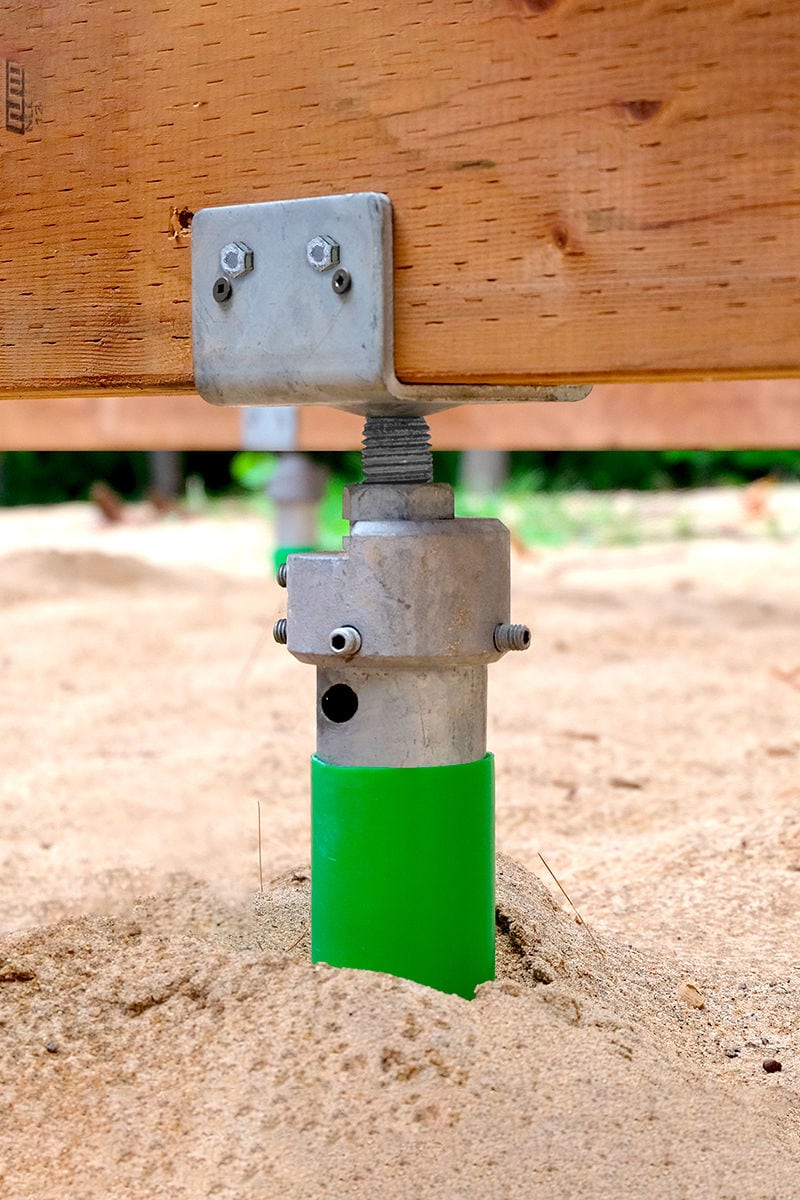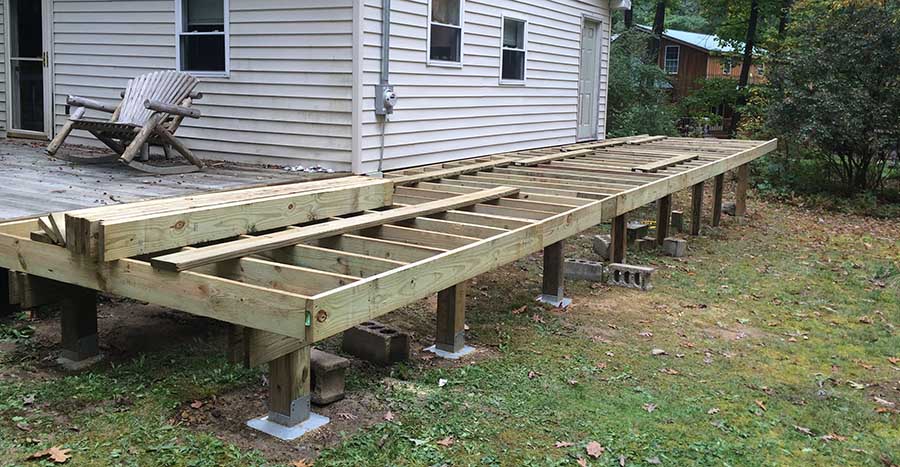Deck Footings Unveiled: Recognizing the Key Elements of a Reliable Deck Framework
Specialist Tips for Putting Up Deck Footings to Support Your Outdoor Space
When it comes to developing a deck, one of the most essential components to take into consideration is the installation of proper footings. These footings are the structure upon which your exterior area will certainly relax, offering security and assistance for years to come. What precisely does it take to install deck grounds appropriately?
Relevance of Proper Deck Grounds
Appropriate deck footings are vital for making certain the stability and long life of your outdoor room. Without solid and properly mounted footings, your deck might end up being unstable, leading to security dangers and costly repair services.

In addition to security, proper deck grounds likewise contribute to the long life of your outside area (Deck Footings). Footings that are designed and built to hold up against the aspects and soil conditions in your area will certainly help avoid the deck from shifting or settling with time. By making sure the grounds are correctly sized and set up, you can reduce the danger of damages to the deck framework, prolonging its life expectancy and minimizing the demand for costly fixings or replacements

Selecting the Right Kind Of Grounds
When choosing the suitable type of grounds for your deck, it is essential to consider aspects such as soil conditions, regional building regulations, and the total layout of your outside space. The sort of footing you pick will certainly play a crucial function in making certain the stability and durability of your deck.
One typical sort of ground is the concrete ground. Concrete grounds are suitable for a lot of dirt conditions and supply superb support for decks. They are commonly installed listed below the frost line to stop changing and working out as a result of freezing and thawing cycles. Another alternative is helical piers, which are perfect for areas with unpredictable soil or high water tables. These piers are screwed right into the ground and give solid support for the deck.
In some situations, you might need to make use of specialized grounds, such as pile grounds or deep foundations, if you are developing a multi-level or large deck. These grounds are created to distribute the weight of the deck over a larger location, ensuring stability and preventing clearing up or sinking.
Before selecting a kind of footing, it is vital to seek advice from local building ordinance and policies to ensure compliance. Furthermore, take into consideration the layout and intended use your outside space. Aspects such as the dimension, form, and load-bearing requirements of your deck will certainly influence the kind of footing that is most appropriate.
Preparing the Ground for Footing Installation
To correctly prepare the ground for footing setup, it is crucial to assess the dirt conditions and take necessary actions to make certain stability and durability of the deck. The very first step is to excavate the location where the footings will be installed.
Once the area has actually been excavated, the following step is to compact the soil. This can be done making use of a plate compactor or by making use of a hand tamper. Condensing the soil assists to get rid of any spaces or air pockets, which can bring about working out and instability in time.
After condensing the soil, it is vital to lay a layer of crushed rock or crushed stone at the base of the excavation. This will certainly give drainage and aid to avoid water from pooling around the footings, which can cause erosion and instability.
Step-by-Step Overview to Installing Deck Footings
After appropriately preparing the ground for footing installment, the following action is to begin the procedure of setting up deck grounds. This step-by-step overview will certainly offer you with a clear understanding of how to set up deck grounds for your outside space.
Establish the place: Begin by marking the settings of the deck footings making use of risks and string. Make certain that the areas align with the style and layout of your deck.
Dig the openings: Utilize a message opening miner or an auger to dig the openings for the footings. The depth and diameter of the holes need to be in conformity with local building ordinance and the certain demands of your deck layout.
Level the holes: Make use of a level to make certain that the openings are dug to the proper depth and are level with each various other. you can check here (Deck Footings)
Include crushed rock: Place a layer of crushed rock at the end of each opening to boost drain and prevent the wood from rotting.
Put the footings: Place the footings into the openings, ensuring they are degree and plumb. Use a degree and a determining tape to make certain precision.
Safeguard the grounds: Pour concrete into the holes around the footings, loading them to the top. Utilize a blog post level to guarantee the footings continue to be degree as the concrete collections.
Permit time for healing: Allow the concrete cure according to the producer's guidelines prior to proceeding with the deck building and construction.
Typical Blunders to Prevent Throughout Footing Installation
One important element to consider throughout the installment of deck grounds is staying clear of usual blunders that can compromise the security and durability of your outdoor area. While deck footings might look like a uncomplicated and basic part of the construction process, neglecting specific variables can result in costly repair work and prospective security risks down the line.

Furthermore, overlooking to mount proper drain steps can trigger water to gather around the footings, causing rot, decay, and the eventual weakening of the deck's structure. Utilizing the incorrect type of footing material or stopping working to sufficiently secure the grounds can compromise their architectural honesty.
To prevent these errors, it is necessary to talk to a specialist or follow market guidelines to make certain proper footing setup. By doing so, you can ensure the stability and longevity of your outdoor area, giving a secure and pleasurable environment for years ahead.
Conclusion
In conclusion, setting up appropriate deck grounds is crucial for the security and long life of your outdoor space. By choosing the ideal kind of footings and adequately preparing the ground, you can guarantee a solid structure for your deck. Following a step-by-step guide and staying clear of typical blunders throughout footing installation will additionally enhance the sturdiness and safety and security of your deck.
Appropriate deck grounds are important for making sure the security and durability of your outside area. The footings offer as a link in between the deck and the ground, enabling the weight of the deck and its occupants to be distributed uniformly right into the dirt.One usual type of ground is the Recommended Site concrete footing. Place the grounds: Put the footings into the holes, making certain they are degree and plumb. Protect the footings: Pour concrete right into the openings around the footings, loading them to the top.